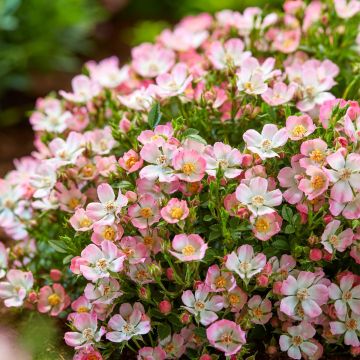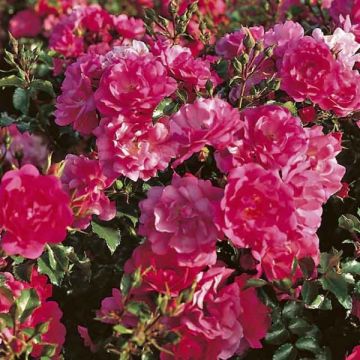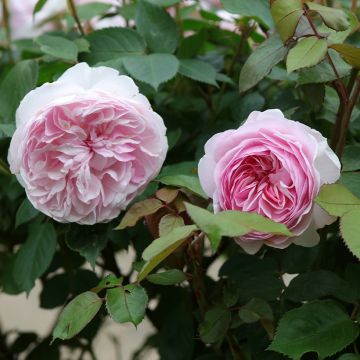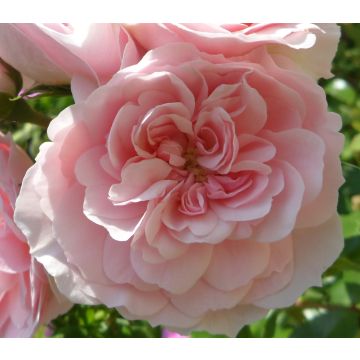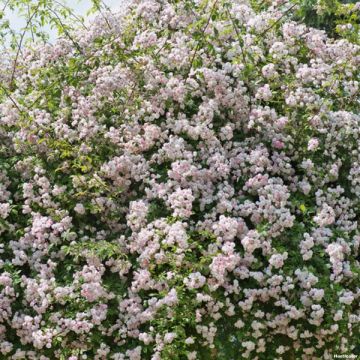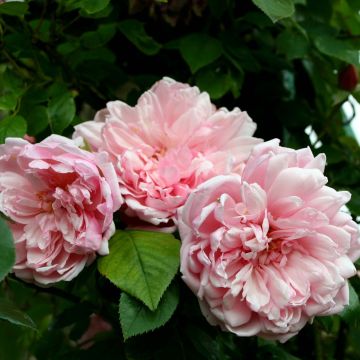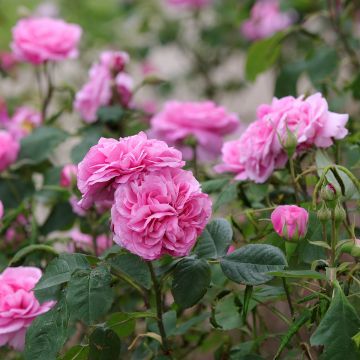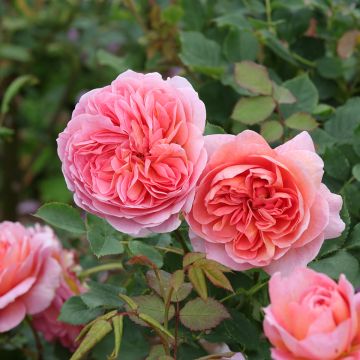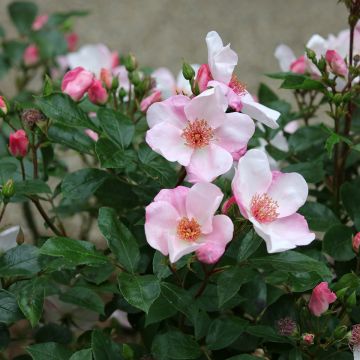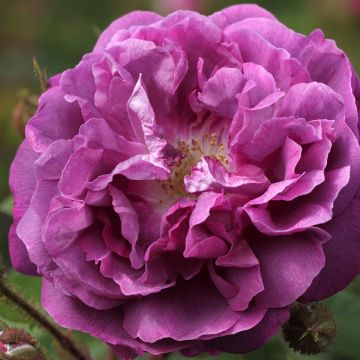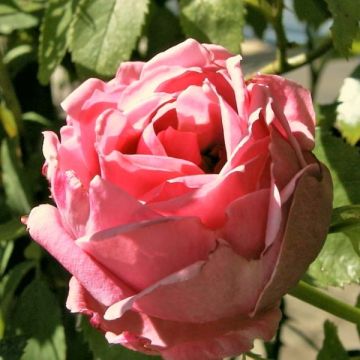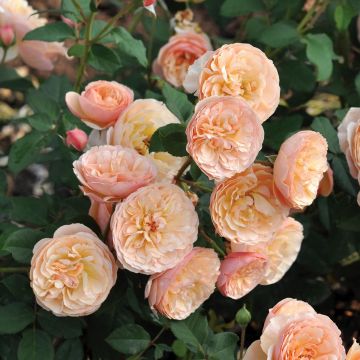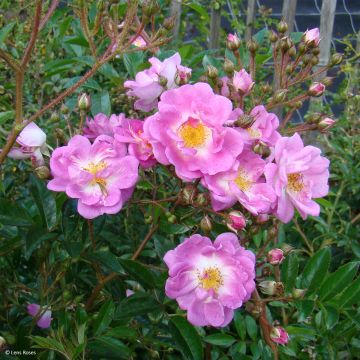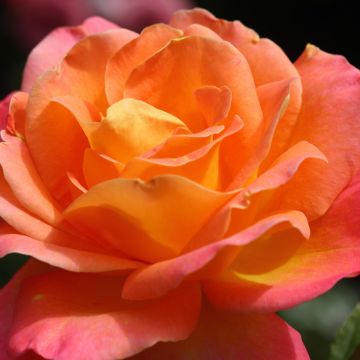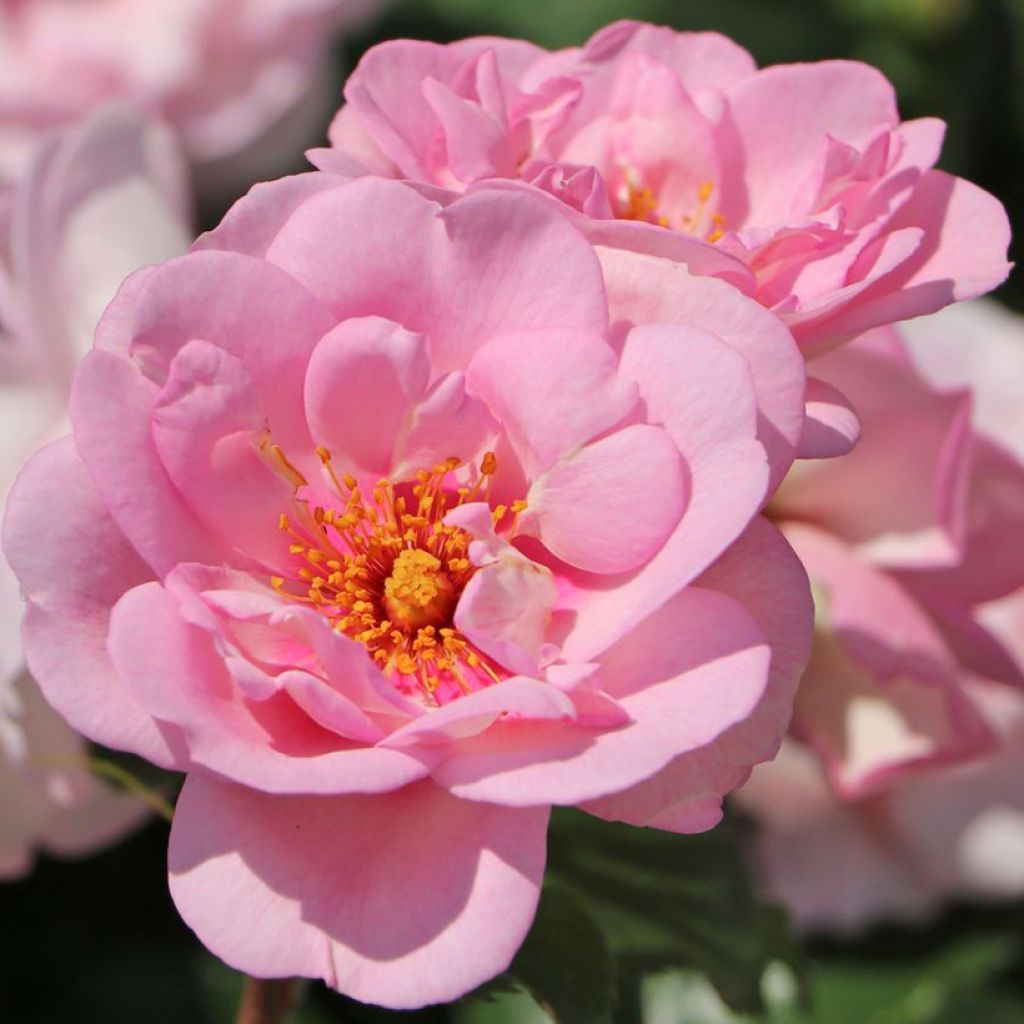

Rosier à fleurs groupées Orienta Magnolia
Rosa x Hulthemia persica Orienta Magnolia
Rosa x Hulthemia persica Orienta® Magnolia
Rose
Why not try an alternative variety in stock?
View all →This plant carries a 24 months recovery warranty
More information
We guarantee the quality of our plants for a full growing cycle, and will replace at our expense any plant that fails to recover under normal climatic and planting conditions.
From €5.90 for pickup delivery and €6.90 for home delivery
Express home delivery from €8.90.
From €5.90 for pickup delivery and €6.90 for home delivery
Express home delivery from €8.90.
Delivery to Corse prohibited: UE law prohibits the import of this plant from mainland France to Corse as part of the fight against Xylella fastidiosa. Please accept our sincere apologies.
More information
Does this plant fit my garden?
Set up your Plantfit profile →
Description
The 'Orienta Magnolia' Rose is part of a lineage of modern hybrids that possess the genes of the mythical Persian rose, named Hulthemia persica. This Magnolia variety, with its beautiful natural habit, bears semi-double flowers that cannot fail to impress: adorned with beautiful intense pink macules in the throat and a lovely cluster of stamens, they attract bees as much as the gardener's attention. Planted in a large border or mixed with other bushes, it creates a magnificent display, flowering from June to October.
The Rosa (x) persica Orienta Magnolia, introduced by German rose breeder Tantau in 2020, descends from a wild rose discovered in 1784 by botanist André Michaux in the Zagros Mountains, straddling Iran and Iraq. The unique feature of its bicoloured flowers has since inspired breeders to attempt hybridisation with other species and cosmopolitan varieties better suited to our climate. After years of research and selection, highly promising new hybrid cultivars were developed, first in England and then in Germany.
'Orienta Magnolia', classified in the floribunda rose category, is a thorny bush with a graceful habit, supported by slightly arching branches. It will reach approximately 1.10 m (4ft) in height with a spread of 60 cm (24in). It produces flowers from June to October in successive waves. However, a soil that is too dry in summer will reduce the flowering, without harming the plant. Its branches bear beautiful foliage of bright, glossy green, remarkably healthy. The semi-double flowers, composed of 10 petals arranged in cups, measure approximately 7 cm (3in) in diameter. They have a throat speckled with fuchsia to magenta on a background of pink, which varies in shade depending on the stage of flowering. Their fragrance is delicate and quite pronounced. The deciduous foliage is absent in winter.
The 'Orienta Magnolia' rose has something magical about it. It integrates well in a border, planted in groups of 3 to 5 specimens, in a large border, or alongside other roses with a natural appearance ('Astronomia', 'Bee's Paradise Pink', 'Rosanatura Rosea'). A true jewel for the garden or terrace, it deserves a prime location. It is also hardy enough to withstand our normal winters, making it suitable for adoption anywhere. With its moderate growth, it will adapt to the more limited spaces of urban gardens. For example, in a border, it can be associated with pink or white foxgloves, lavender, or pretty grasses like Muhlenbergia capillaris. This rose is also beautiful when combined with the mass of tall asters (Aster laevis, Aster turbinellus), or surrounded by pink yarrow and basket-of-gold.
Report an error about the product description
Plant habit
Flowering
Foliage
Botanical data
Rosa
x Hulthemia persica
Orienta® Magnolia
Rosaceae
Rose
Cultivar or hybrid
Other Roses A to Z
Planting and care
The 'Orienta Magnolia' rose is not demanding in terms of soil type, it only fears an excess of limestone and heavy, suffocating soils. It thrives in sunny regions up to 1000m (3281ft) altitude, is not afraid of diseases, cold, or summer drought once well established. However, a lack of water will dry up its generous flowering. It adapts to all gardens, as long as the planting is well taken care of! Plant it in well-prepared and properly drained soil. It may be useful to remove dead wood in winter and lightly prune it at the end of winter.
Planting period
Intended location
Care
This item has not been reviewed yet - be the first to leave a review about it.
Haven't found what you were looking for?
Hardiness is the lowest winter temperature a plant can endure without suffering serious damage or even dying. However, hardiness is affected by location (a sheltered area, such as a patio), protection (winter cover) and soil type (hardiness is improved by well-drained soil).

Photo Sharing Terms & Conditions
In order to encourage gardeners to interact and share their experiences, Promesse de fleurs offers various media enabling content to be uploaded onto its Site - in particular via the ‘Photo sharing’ module.
The User agrees to refrain from:
- Posting any content that is illegal, prejudicial, insulting, racist, inciteful to hatred, revisionist, contrary to public decency, that infringes on privacy or on the privacy rights of third parties, in particular the publicity rights of persons and goods, intellectual property rights, or the right to privacy.
- Submitting content on behalf of a third party;
- Impersonate the identity of a third party and/or publish any personal information about a third party;
In general, the User undertakes to refrain from any unethical behaviour.
All Content (in particular text, comments, files, images, photos, videos, creative works, etc.), which may be subject to property or intellectual property rights, image or other private rights, shall remain the property of the User, subject to the limited rights granted by the terms of the licence granted by Promesse de fleurs as stated below. Users are at liberty to publish or not to publish such Content on the Site, notably via the ‘Photo Sharing’ facility, and accept that this Content shall be made public and freely accessible, notably on the Internet.
Users further acknowledge, undertake to have ,and guarantee that they hold all necessary rights and permissions to publish such material on the Site, in particular with regard to the legislation in force pertaining to any privacy, property, intellectual property, image, or contractual rights, or rights of any other nature. By publishing such Content on the Site, Users acknowledge accepting full liability as publishers of the Content within the meaning of the law, and grant Promesse de fleurs, free of charge, an inclusive, worldwide licence for the said Content for the entire duration of its publication, including all reproduction, representation, up/downloading, displaying, performing, transmission, and storage rights.
Users also grant permission for their name to be linked to the Content and accept that this link may not always be made available.
By engaging in posting material, Users consent to their Content becoming automatically accessible on the Internet, in particular on other sites and/or blogs and/or web pages of the Promesse de fleurs site, including in particular social pages and the Promesse de fleurs catalogue.
Users may secure the removal of entrusted content free of charge by issuing a simple request via our contact form.
The flowering period indicated on our website applies to countries and regions located in USDA zone 8 (France, the United Kingdom, Ireland, the Netherlands, etc.)
It will vary according to where you live:
- In zones 9 to 10 (Italy, Spain, Greece, etc.), flowering will occur about 2 to 4 weeks earlier.
- In zones 6 to 7 (Germany, Poland, Slovenia, and lower mountainous regions), flowering will be delayed by 2 to 3 weeks.
- In zone 5 (Central Europe, Scandinavia), blooming will be delayed by 3 to 5 weeks.
In temperate climates, pruning of spring-flowering shrubs (forsythia, spireas, etc.) should be done just after flowering.
Pruning of summer-flowering shrubs (Indian Lilac, Perovskia, etc.) can be done in winter or spring.
In cold regions as well as with frost-sensitive plants, avoid pruning too early when severe frosts may still occur.
The planting period indicated on our website applies to countries and regions located in USDA zone 8 (France, United Kingdom, Ireland, Netherlands).
It will vary according to where you live:
- In Mediterranean zones (Marseille, Madrid, Milan, etc.), autumn and winter are the best planting periods.
- In continental zones (Strasbourg, Munich, Vienna, etc.), delay planting by 2 to 3 weeks in spring and bring it forward by 2 to 4 weeks in autumn.
- In mountainous regions (the Alps, Pyrenees, Carpathians, etc.), it is best to plant in late spring (May-June) or late summer (August-September).
The harvesting period indicated on our website applies to countries and regions in USDA zone 8 (France, England, Ireland, the Netherlands).
In colder areas (Scandinavia, Poland, Austria...) fruit and vegetable harvests are likely to be delayed by 3-4 weeks.
In warmer areas (Italy, Spain, Greece, etc.), harvesting will probably take place earlier, depending on weather conditions.
The sowing periods indicated on our website apply to countries and regions within USDA Zone 8 (France, UK, Ireland, Netherlands).
In colder areas (Scandinavia, Poland, Austria...), delay any outdoor sowing by 3-4 weeks, or sow under glass.
In warmer climes (Italy, Spain, Greece, etc.), bring outdoor sowing forward by a few weeks.

































